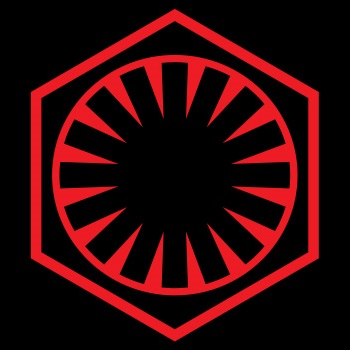

The Jedi | The Sith | Other Force Religions | Lightsabers
The Sith

The Sith are Force-wielding sorcerers and dark warriors who practice a religion devoted to utilizing the dark side of the Force. They have
existed in one form or another in the galaxy for about 7000 years, usually organized into one or more occult, secret societies known
as a Sith Order. These societies were principally dedicated to galactic domination, or at least the quest for great power, as well as to
corrupting Force wielders to join the dark side and to preserving the mission and practices of the Sith religion. The origins of the Sith
represent the combination of a heretical sect of Jedi dedicated to the dark side with the native religion of a species known as Sith,
who lived on a planet which was strong with the dark side. Sith history can be divided into a 3000-year formative period mostly
in isolation from the Republic and the Jedi, and the following 4000 years leading to the era of the SW films, where the Sith religion
took on a more standard form. The Sith believe it is the will of the Force that they use their powers as they see fit, and see themselves
as chosen by the Force to "rule the galaxy." The Sith are occult, authoritarian, ritualistic, and martial, and are philosophically devoted
to conflict, exploitation, the domination of the powerful, and to that which is unnatural. The Sith teach aggression, and practice and
utilize Force-enhanced martial arts, however they usually prefer to protect themselves from their many enemies by having others
risk their lives fighting for them, willingly or unwillingly. The Sith do not need credit or fame, only power, and prefer to manipulate
others and remain hidden, as it is the best strategy for self-preservation. The Sith are traditionally wielders of lightsabers, which also
amplify the Force and significantly enhance their power, however they are less reliant on these weapons than the Jedi due to their
additional abilities with the Force and their usual tactic of avoiding direct confrontation. A Sith Order was led by a pair of Sith Lords,
the Dark Lord of the Sith and their apprentice, who are considered the only true Sith, usually supported by some number of dark
Acolytes. The Sith maintained a rigid hierarchy, which demanded absolute subordination and loyalty. The Sith Lord ruled with total
authority, with their apprentice exerting that same authority over all others, subordinate only to their master.

As Lucas explains, "Sith rely on their passion to get things done. They use their raw emotion, their hatred, their anger, their bitterness,
which is the dark side of the Force. The Force is what binds the galaxy together, and it has a good side and a bad side. The Sith learned
how to manipulate both sides of the Force, and then they fell into the trap of being corrupted by the dark side." An individual must be
strong enough with the Force to wield it before being trained as a Sith warrior. The Sith practice "the Jedi arts", however their discipline
emphasizes the attainment of powers with the Force unnaturally fast. The Sith build their connection to the Force through anger, hate,
greed, and unrestrained emotion, by focusing on their own power building. This gives the Sith the same supernatural powers as the Jedi,
including various forms of precognition, telekinesis, telepathy, and prophetic vision. Their use of the dark side gave some variation in
these abilities, or unlocked new uses for these abilities. This includes the Sith version of a 'mind trick', their ability to force information
from another's mind telepathically, and 'Force scream', which uses sound combined with telepathic energy to stun opponents. Sith Lords
who are powerful and knowledgeable enough can also access additional powers, some of which are unnatural and thus unavailable to
the Jedi. These abilities usually require specialized knowledge of how to use the Force, which are only shared by a Sith Lord with their
subordinates if they deem it to be more beneficial to their schemes than it is dangerous to their own position. Some Sith learn one or
more of these abilities without a teacher, by building their connection to the dark side of the Force on their own. These abilities include
things like 'Force lightning', 'Sith alchemy', and direct manipulation of midi-chlorians, powers which have no known Jedi equivalents.
These abilities are not known by all Sith Lords, and some can be lost to the Sith for generations if a Lord died without passing them down.
BELIEFS AND TEACHINGS
The Sith believe the Force is with them, and that using the Force as they see fit including the dark side is the will of the Force. They believe
that the Jedi and other forces in favor of 'freedom' are agents of chaos and disorder who promote a decadent and trivial culture steeped
in the very corruption they claim to oppose. They believe the Jedi are in fact morally inferior, as they see them as identical to the Sith in
most regards, but also as actively repressing individuals from achieving their full potential, and fearful of the true nature of the Force, which
includes the dark side. Lucas explains, the Jedi seek "to make sure everyone is protected, to bring peace", and thus "they are the enemy of
the Sith, because the Sith want to dominate the galaxy, to control everything." The Sith believe that order is strength and security, and that
the powerful have a natural right to rule over the weak. This is due to their fundamental belief in the virtue of competition, and thus they
believe that all beings can reach more of their potential in an atmosphere of strife, conflict, fear, and struggle. Lucas describes the Sith as
"people who are very self-centered and selfish", which is the cornerstone of their philosophy. The Sith emphasize conflict and the virtues
of selfishness, greed, power, anger, fear, deception, aggression, slavery, cruelty, vanity, vengeance, knowledge, and wisdom. The Sith are
absolutist and materialistic, believing only in the reality of the material world of matter and energy. As such, the Sith value the unnatural,
favor the artificial over the organic, and are ever in search of technological means and Force abilities which transcend the natural order.
The Sith oppose mercy, compassion, humility, self-sacrifice, limitations on their power, and the Jedi Order and its teachings.
Sith Principles
The Sith have very few rules or dictates, since they value their personal freedom of action and ultimately split from the Jedi over the issue
of doctrine and discipline holding back discovery and advancement with the Force. "The first and only reality of the Sith" is "there can only
be two." All Sith principles are concerned with the quest for power, including this 'Rule of Two', which is designed to maintain the power of
the two true Sith. If another proves powerful enough to defeat one of them, they are considered chosen by the Force as a true Sith. The only
other primary Sith principle is the quest for vengeance against those who have defeated them in the past, as the Sith are selfish, vain, and petty.
They always attempt to take revenge against any group which has previously stifled their goals, which is a big part of why their hatred for
the Jedi is so pronounced. Lucas explains, "for a thousand years they have had a plot against the Jedi", out of their desire to finally take control
of the entire galaxy, and "to seek revenge against the Jedi for perceived injustices" against them. Despite their passion, the Sith also use wisdom,
patience, science, strategy, anonymity, clandestine manipulation, and discipline. Sith martial arts training is largely inherited from the Jedi,
but encourages their students to rapidly advance by connecting with their hatred. The Sith reject limiting their own power, but often limit their
students' power and knowledge in order to remain in a superior position and guard against the threat of their inevitable attempts at betrayal.
All Sith agents and Lords are at times tested with trial by combat, as the Sith believe one's true nature is only revealed under threat of death.
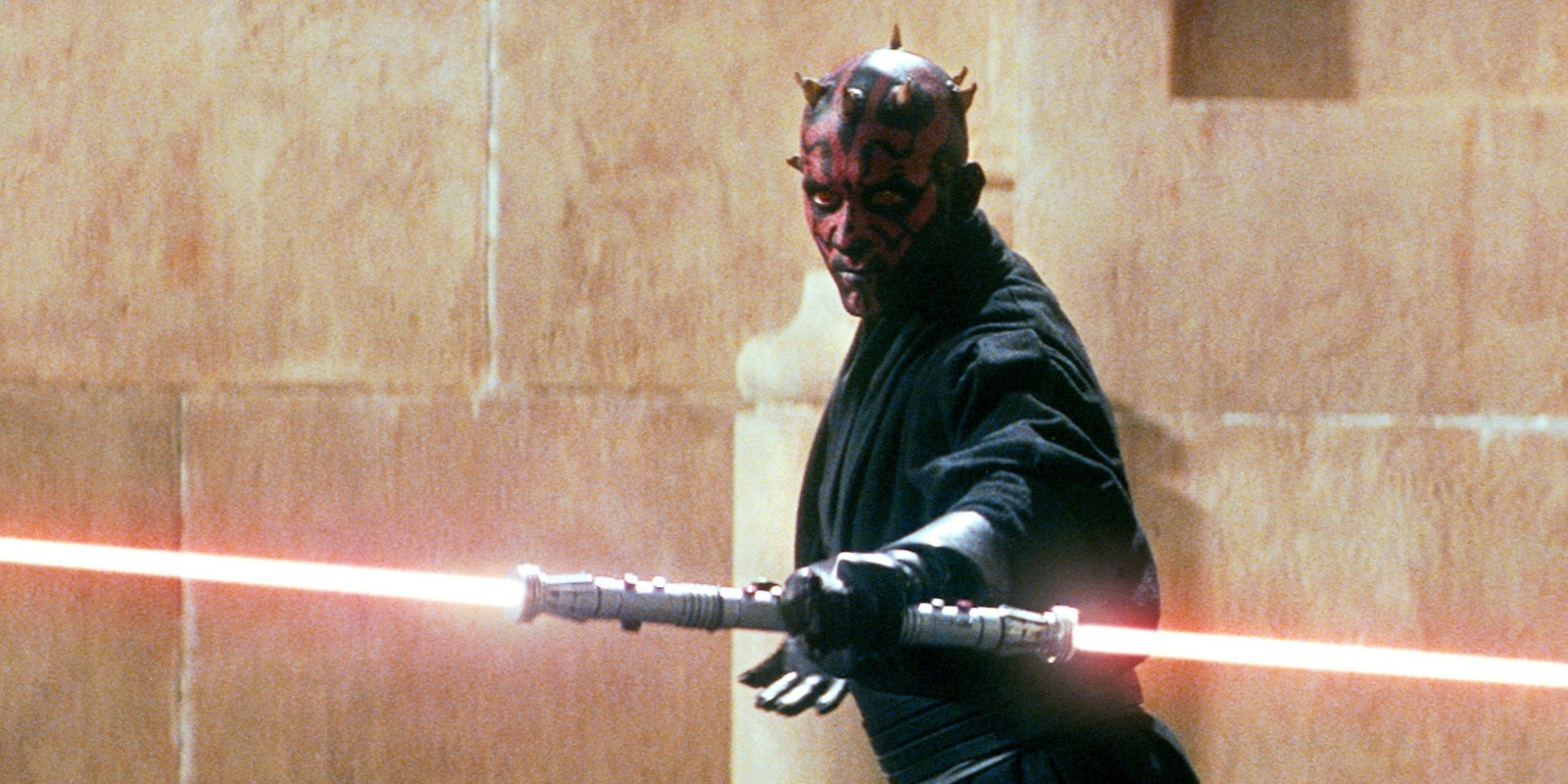
Sith Teachers

"Have you come to be my apprentice? You must kill me to gain my place." (The Clone Wars S6E13)

"The dark side of the Force is a pathway to many abilities some consider to be unnatural." (Episode III)
"If one is to understand the great mystery, they must study all its aspects, not just the dogmatic, narrow view of the Jedi.
If you wish to become a complete and wise leader, you must embrace a larger view of the Force." (Episode III)
Teachings About the Jedi
"All who gain power are afraid to lose it, even the Jedi." (Episode III)
"The Sith and the Jedi are similar in almost every way, including their quest for greater power." (Episode III)
"The Jedi are relentless. If they are not all destroyed it will be civil war without end." (Episode III)
Teachings to His Students
"Use your aggressive feelings. Let the hate flow through you." (Episode VI)
"Your hate has made you powerful." (Episode VI)
"Move against the Jedi first." (Episode I)
"Trust your feelings." (Episode II)
"Only through me can you learn a power greater than any Jedi." (Episode III)
"Do not hesitate, show no mercy." (Episode III)
"I would hate to think you are training your own Sith apprentice to destroy me." (The Clone Wars S3E12)
"There is no mercy." (The Clone Wars S5E16)

"At last we will have revenge." (Episode I)
"Fear attracts the fearful, the strong, the weak, the innocent, the corrupt. Fear is my ally." (Non-canon)
Teachings to His Students
"We must move cautiously." (The Clone Wars S5E15)
"Greed never fails to motivate." (The Clone Wars S5E15)
"Only the strongest shall rule." (The Clone Wars S5E15)
"Let your anger deepen your hatred." (The Clone Wars S5E16)
"Your passions give you strength. And through strength, you gain power." (Rebels S2E21-22)
"To defeat your enemy, you must know your enemy. Even practice their beliefs." (Rebels S2E21-22)
"Your anger is a wellspring. You must use it." (Rebels S2E21-22)
"You have seen it. You feel it. You must break your chains. Use your power." (Rebels S2E21-22)
"Unless you take risks, do what must be done, there will always be limits to your abilities.
Seize the knowledge. Seize the power." (Rebels S2E21-22)
"The dark side fights without mercy, without remorse. If you want to be victorious,
you need to find the same strength inside you." (Rebels S2E21-22)
"You were given your gift for one reason, to use it." (Rebels S2E21-22)
"Use your anger, use your pain, let it fill you, fuel you." (Rebels S2E21-22)

"The Force is with us." (Episode II)
"Twice the pride, double the fall." (Episode III)
"A failed apprentice makes for a foolish master." (The Clone Wars S3E14)
Teachings to His Students
"You fight like the Sith, you wear the trappings of the Sith, but this can be imitated, however. You lack a vital
quality found in all Sith. Sith have no fear, and I sense much fear in you." (Clone Wars Chapter 7)
"You must prove yourself worthy of being my apprentice." (The Clone Wars S1E9)
"A wise master does not reveal all his secrets at once." (The Clone Wars S3E14)
"[Forgiveness] is not the way of the dark side." (The Clone Wars S3E14)
"Your anger is your strength." (The Clone Wars S3E14)
"You have a natural ability, but we must hone it. Are you up for the challenge
of putting your hate to better use?" (The Clone Wars S3E14)
"You must strengthen your connection to the Force. Feel its power within you." (The Clone Wars S3E14)
"The task is only impossible because you have deemed it so.
You must connect with your hatred!" (The Clone Wars S3E14)
"Focus on your power building. Do not think of anyone or anything else." (The Clone Wars S3E14)

"If you're not with me, then you're my enemy." (Episode III)
"The ability to destroy a planet is insignificant next to the power of the Force." (Episode IV)
"Don't underestimate the Force." (Episode IV)
"If you only knew the power of the dark side!" - (Episode V)
Teachings to His Students
"You have controlled your fear. Now, release your anger." (Episode V)
"You don't know the power of the dark side. I must obey my master." (Episode VI)

"Jedi: Their Order is a fading light in the dark; corrupt and arrogant. They must be punished.
The Jedi shall fall." (Clone Wars Chapter 7)
Teachings to Her Students
"Learn to draw your strength from your emotions. Hate will feed you. Never sympathize with the enemy,
not even for a moment." (The Clone Wars S3E13)
SITH TEMPLES
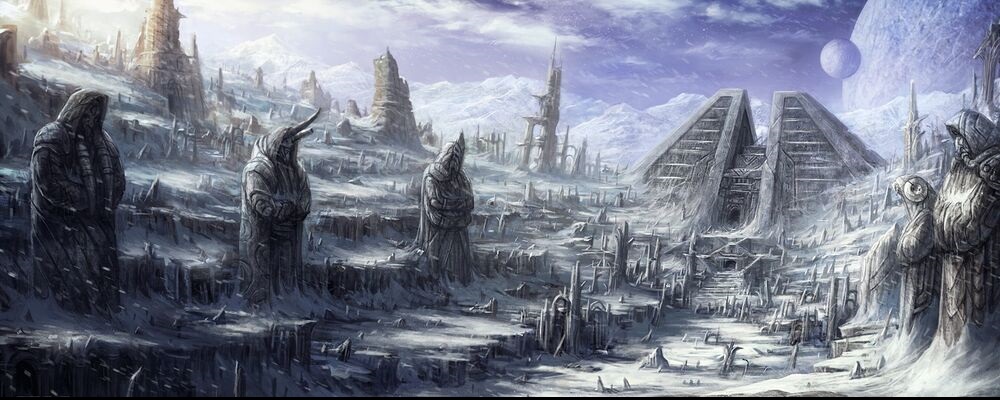
Sith temples were ritual sites for the practice of the Sith religion, almost exclusively built on top of a vergence in the Force or a place of
significant strength with the Force, or the dark side in particular. Sith temples were sometimes residences, but were more often also
fortifications or battlestations in addition to being places of dark power. The Sith would sometimes build their temples over former
Jedi sites, in order to corrupt the local energy of the Force. Sith temples were usually constructed with stone which was inlayed with
circuitry and mechanisms that made the stone more dynamic and powerful than it would be in its natural state, in keeping with Sith
philosophy and means. Sith temples were usually destroyed or suppressed by the Jedi, however those which are left behind were
often kept safe by their many security features, and since they could only be operated by the use of the Force. Due to their connection
to the dark side of the Force, many temples enhanced Sith senses which allowed visions and intuition from the Force to come more
readily. Sith temples are usually built with a pyramidal structure, which reflects their philosophy by being the strongest shape in
nature based on the number 3, which along with 6 are central to Sith number theory. This aesthetic concern is secondary, however,
as the primary purpose is to turn the structure into a tuning fork for the dark side of the Force, artificially enhancing their power
at the site even further. Most historical Sith temples were entirely lost or well-hidden, partly because the Sith who used them were
eventually destroyed, and also because the Sith will readily abandon any unsafe base. Planets known to have hosted a Sith temple:
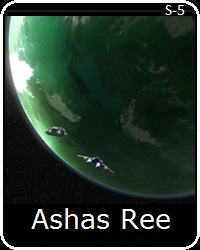

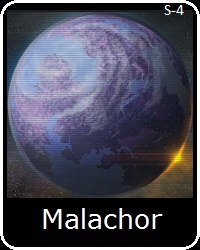
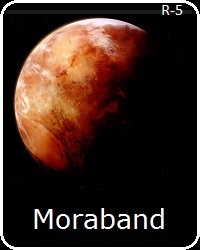



Most Sith temples which can still be found in the galaxy were ancient ruins which nonetheless still operated and contained secrets and
even technology of the Sith. Some of these ruins dated back to the early eras of Sith power, like the temple in the Valley of the Dark
Lords on the ancient Sith capital of Moraband (previously Korriban), the temple on Ashas Ree, and the Temple of Exar Kun on Yavin 4.
Other ruins, like the Sith temple and superweapon on Malachor, dated to the later eras of the great Sith Empires. Sith temples did
not need to be constructed for purpose, and particularly during the millennium leading up to the era of the SW films were often
buildings which had been retrofitted to serve as their secret headquarters. The LiMerge Tower on Coruscant, owned by a shell company
owned by Darth Sidious, was used as his clandestine temple on Coruscant for over a decade before the fall of the Jedi Order. The Sith
built their first new temples in over 1000 years during the reign of the Sith-controlled Galactic Empire. Fortress Vader was a Sith temple,
a dark side amplifier, and Darth Vader's personal residence. Fortress Inquisitorius was a Sith temple which served as the headquarters
of the Imperial Inquisition, and also hosted an Imperial military base.

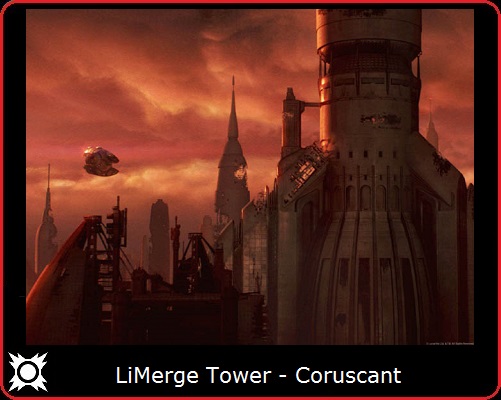
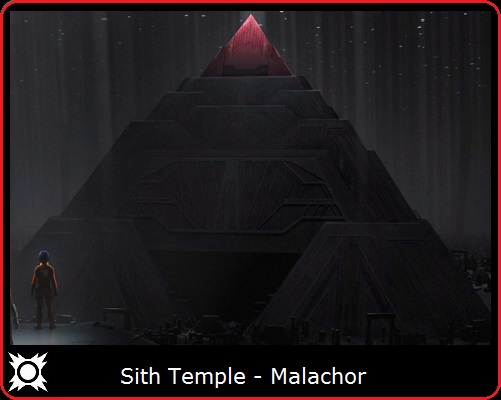



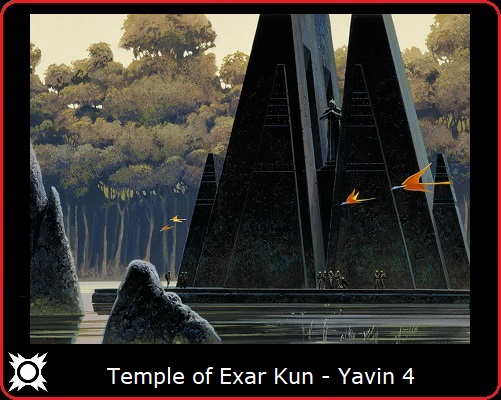
THE SITH ORDER
The Sith Order was an ancient religious society devoted to the dark side of the Force and the domination of the material realm. The Sith
underwent several periods of development and change before arriving at the practices, trappings, and philosophy familiar to the era
of the SW films. The Sith have been presumed completely destroyed at least three times in history, and at least once the Order was
completely resurrected by dark Jedi with no direct connection to the earlier eras. As such, the Sith Order of the 'modern' SW eras
was formed about 2000 years prior to the SW films. "The first and only reality of the Sith" is "there can only be two", which has been
the cornerstone of the Sith since early in their history, and the reason why historically there were often many Sith Orders, each led
by a pair of Sith Lords. The only alternative to forming their own order for an ambitious Sith Acolyte who reaches a very advanced state
with the dark side is to kill one of their masters and replace them, since "always two there are, a master and an apprentice." Constant
competition and attrition amongst the Sith was often a larger impediment to Sith success than Jedi opposition, which is why Darth
Bane reorganized the Sith after their last attempt to seize the Republic with an external Sith Empire, about 1000 years before the era
of the films. Under his Order of the Sith Lords, the 'Rule of Two' became an absolute principle, and the use of Sith Acolytes was
kept to a minimum, in order to keep the Sith hidden from the Jedi. As Lucas explains, "there used to be many Sith, but because
they were corrupted by power and ambition, they killed each other off, so now there are only two, a master and an apprentice."
The Jedi once again believed the Sith to have been destroyed, and the Sith Order worked diligently to keep their survival a secret,
allowing them to corrupt the society and politics of the Republic from within, without alerting the Jedi to their work. This strategy
resulted in the Sith successfully seizing political control of the Republic, having already begun to transition it into the Galactic Empire.
The Sith ruled the Empire with absolute authority, and while their Order was not explicitly public knowledge, Sith Lords and their
Acolytes operated openly under Imperial authority, no longer having a strategic need to keep their presence a secret.
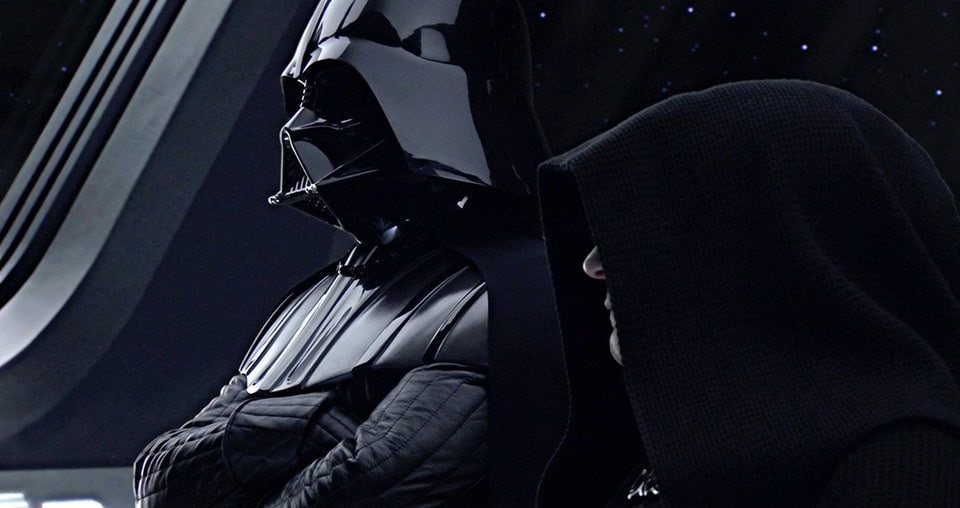
The Sith Order is led by a pair of Sith Lords, the Dark Lord and their apprentice, who are the only true Sith. They maintain a degree
of power over their dark Acolytes by keeping their most occult and arcane knowledge privileged. The Sith maintained a rigid hierarchy,
demanding absolute subordination and loyalty from their 'allies', regardless of whether they had the power to wield the Force. Sith
usually employed by Force wielding agents and a host of chosen allies with political or economic power. A Sith Lord was given a new
name, both for use with their mysterious alter ego and as a token of their destroying their 'weaker' past identity to become reborn as
a devotee to the dark side. A Sith Lord was given the epithet 'Darth', said to mean literally "Lord-Sith". The Sith Lord ruled with total
authority, with their apprentice acting as their proxy and exerting that same authority over all others, subordinate only to their master.
The Sith tested new agents with trial by combat, and those which would pass could become a Sith Acolyte or even apprentice Sith Lord
if a position was available. An Acolyte could become a Sith Lord by defeating the Sith apprentice, thus proving themselves more worthy.
At the same time, an apprentice Lord would readily seek a suitable apprentice amongst the more powerful Acolytes, hoping to eventually
overthrow their master. The Sith sought out Force sensitive-children much as the Jedi, seeking to put their potential to use, however
unlike the Jedi, the Sith will often eliminate such children to cull their numbers if they are deemed in any way superfluous. Some beings
who were not Force sensitive served the Sith as loyalists, with full knowledge of whom the Sith were. Known Sith from canon material:
Sith Lords
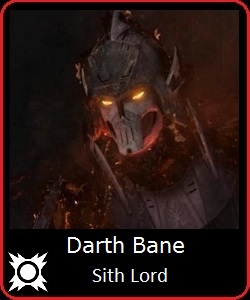



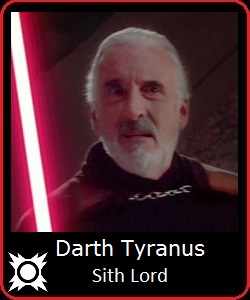

Sith Acolytes
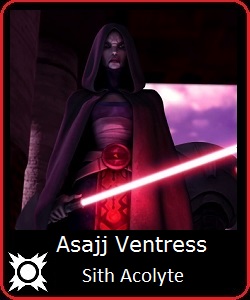
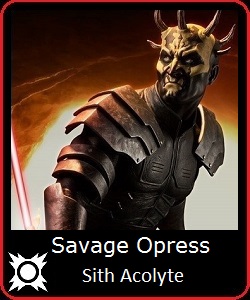
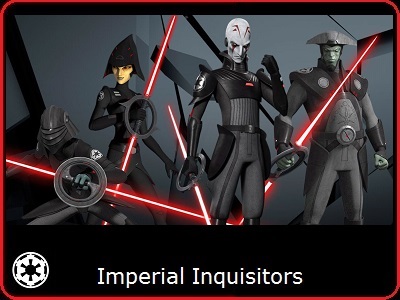
Sith Loyalists


HISTORY OF THE SITH
Much of the well-established history of the Sith comes entirely from legendary sources. Dates are given in the Common Republic
Calendar (CRC), along with 'Before the Battle of Yavin' (BBY) dates in parentheses. BBY dates indicate how many years before
the Battle of Yavin an event took place. The Battle of Yavin was the climax to the original movie Star Wars, a.k.a. Episode IV.
Origins of the Sith
The Sith arose at the end of a period known as the Hundred-Year Darkness, which began before the year 1000 (7000 BBY).
The Hundred-Year Darkness began with the Second Great Schism of the Jedi Order, where a group of Dark Jedi emerged,
who believed that Jedi should embrace the dark side of the Force, rather than shun its use. The conflict would lead to
Dark Jedi raising huge armies to battle the 'Old' Republic and its Jedi defenders.

After nearly a century of conflict, the Dark Jedi and their forces were defeated. The remaining Dark Jedi took what was left
of their forces, and conquered the planet Korriban in the Outer Rim. Korriban, now also known as Moraband, was unknown
to the Republic, and inhabited by non-spacefaring race called the Sith. The technology and force abilities of the Dark Jedi
led them to be welcomed and revered as gods. These Sith had their own native knowledge of the dark side of the Force, giving
the Dark Jedi access to ways of the dark side beyond what they could learn and achieve through their own exploration.
The followers of the religion that resulted from the combination of the two cultures came to be called the Sith.
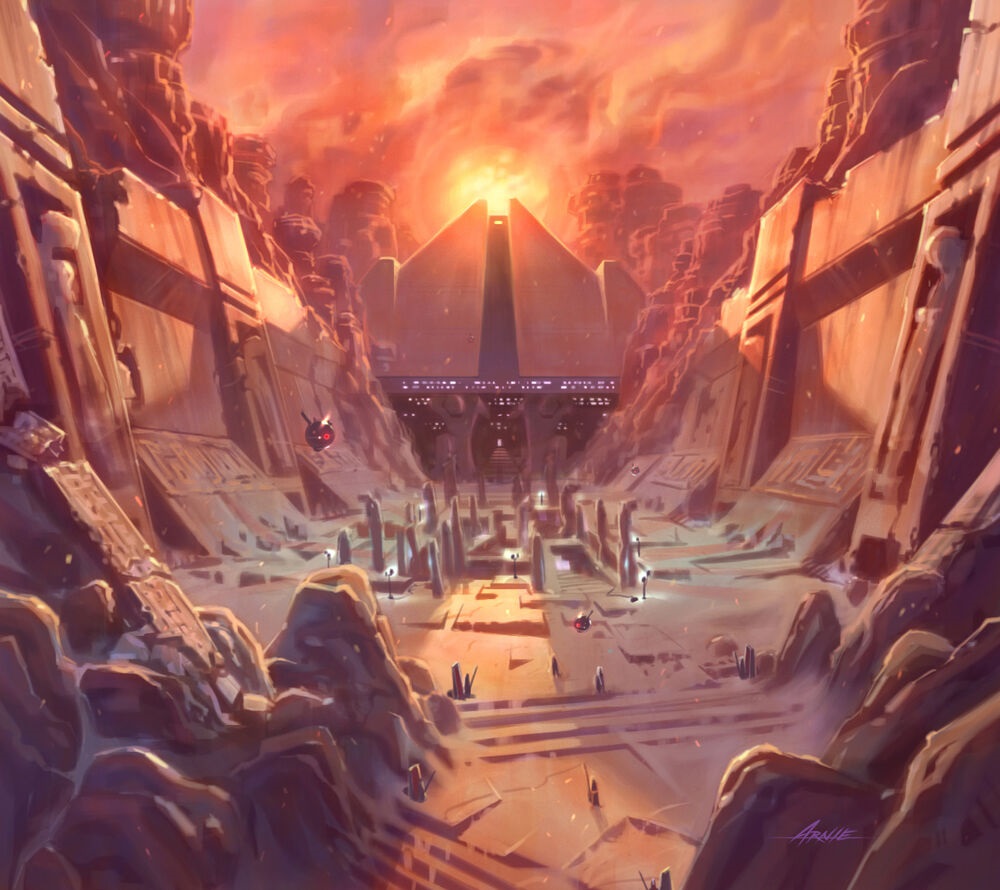
The Old Sith Empire
The Sith grew in their powers and knowledge, and naturally began to expand their power throughout the region near Moraband,
encompassing the region of the Esstran Sector which became known as the Sith Worlds, and became a significant regional power.
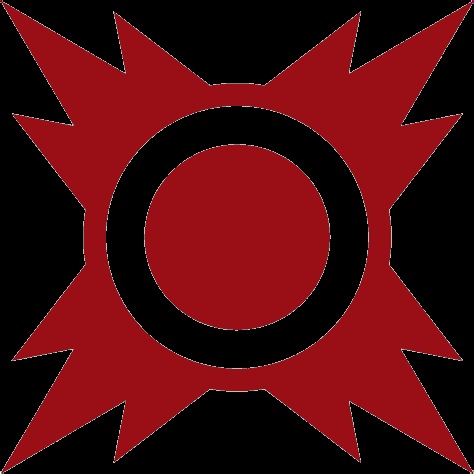
Over the centuries, the 'Old' Sith Empire steadily grew in size and power, finally making contact with the major hyperspace lane,
and worlds of the 'old' Republic. This quickly led to the Great Hyperspace War, around the year 3000 (c.5000 BBY), during which
the Sith invaded the Republic. Despite major victories, and the first Sith assault on Coruscant, the Sith Empire was eventually
defeated. The Republic subsequently invaded the Sith Empire, leading to the conquest of Morband, and the exile of the Sith Order.
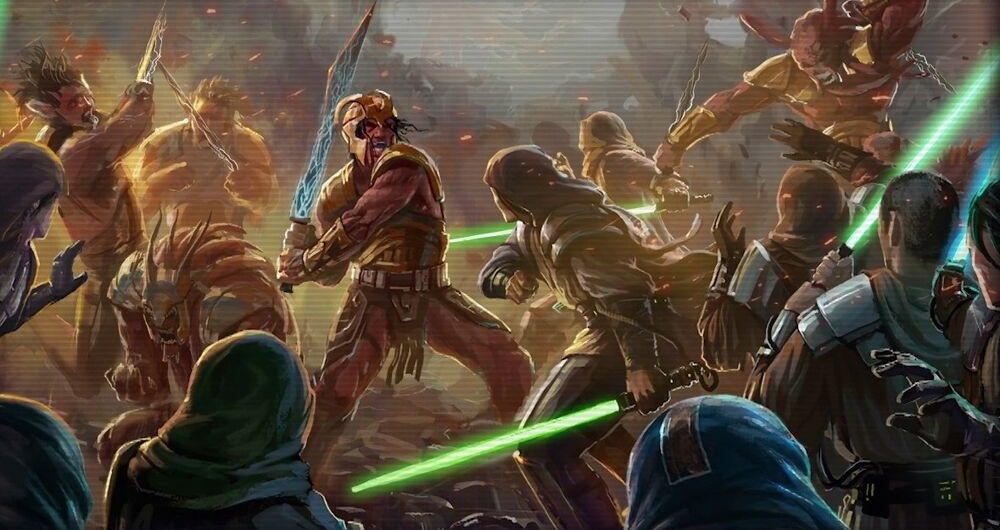
The Sith Empire
The Sith Order reestablished itself on the Sith world of Dromund Kaas, declaring itself the 'True' Sith Empire, and began a program
of military build up and advancement intended to take centuries. The empire remained concealed from the Republic by moving
secretly and cautiously, and avoiding conflict that would expose the strength of their power. After nearly a thousand years,
the Sith began a series of maneuvers intended to destabilize the Republic, in preparation for open warfare.
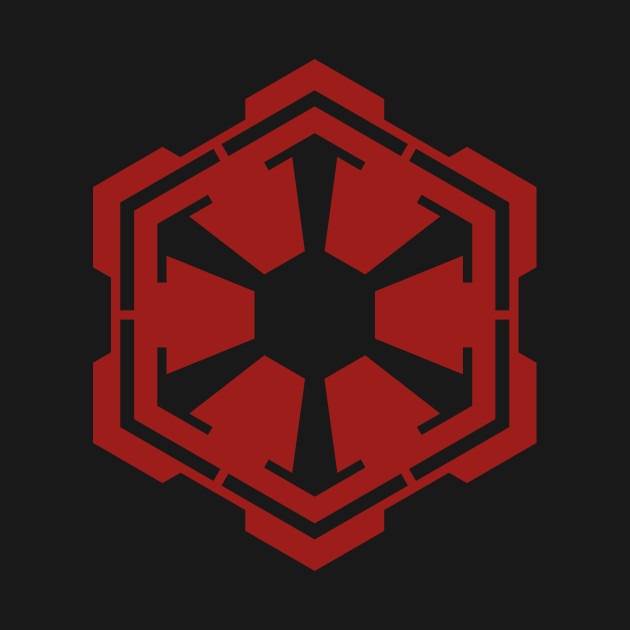
The resulting conflicts, known as the Old Sith Wars, began in 3977 (4000 BBY), would devastate the galaxy, the Republic,
the Jedi Order, and the Sith themselves. This period included the second Sith invasion of Coruscant, competing Sith
empires, and a Sith civil war. In the Great Sith War, the Empire established dominance over large areas of the known
galaxy, and served to spread Sith influence in many regions which would persist for centuries to come.
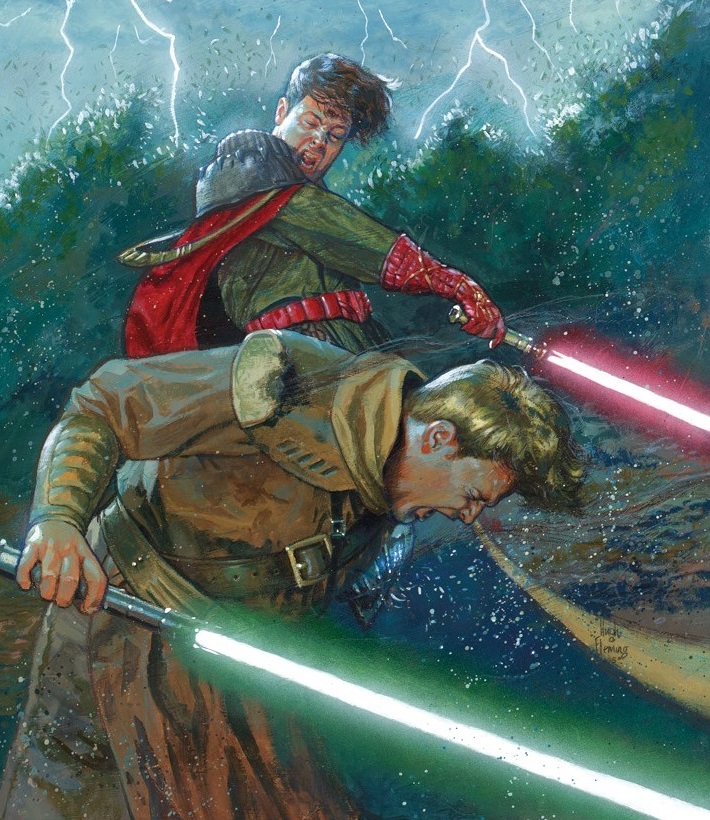
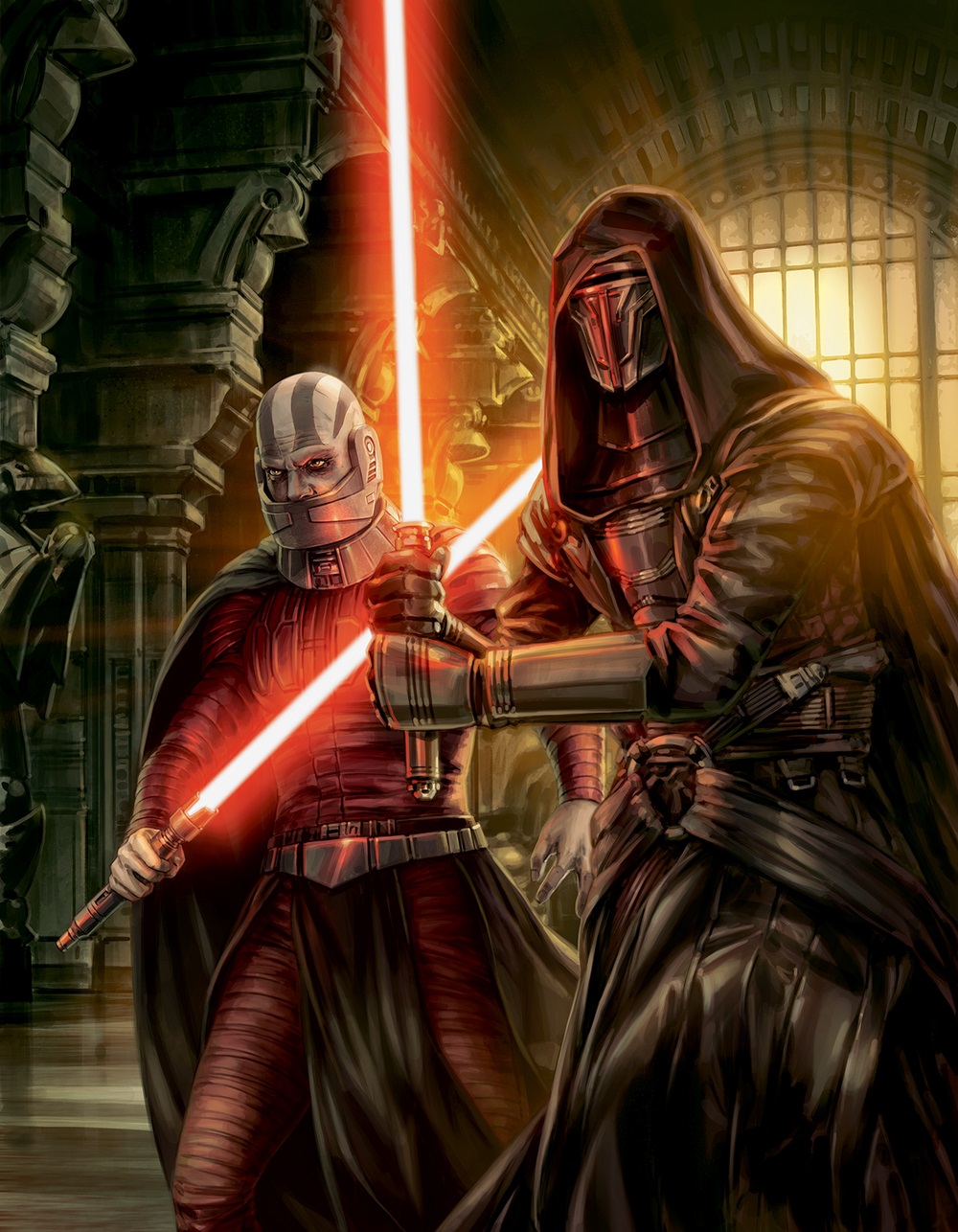
The last of these conflicts would see the Jedi Purge of 4023 (3954 BBY), where the Sith sought to eliminate the Jedi,
removing them as the major hindrance to their efforts to rule the galaxy. This campaign, which included the use of
kyber-powered superweapons by the Sith, was a major blow to the Jedi, who were all but eliminated.

The Dark Lords would remain obsessed with destroying the Jedi, and with their pursuit of superweapons, down through the ages.
While the Sith were also defeated, the slow recovery of the Jedi Order over the next three centuries allowed time for the Sith
to recover their strength and rebuild their forces in the unknown regions. The Sith invasion began by reclaiming their ancient
capital of Moraband in 4296 (3681 BBY), thus beginning the Great Galactic War.
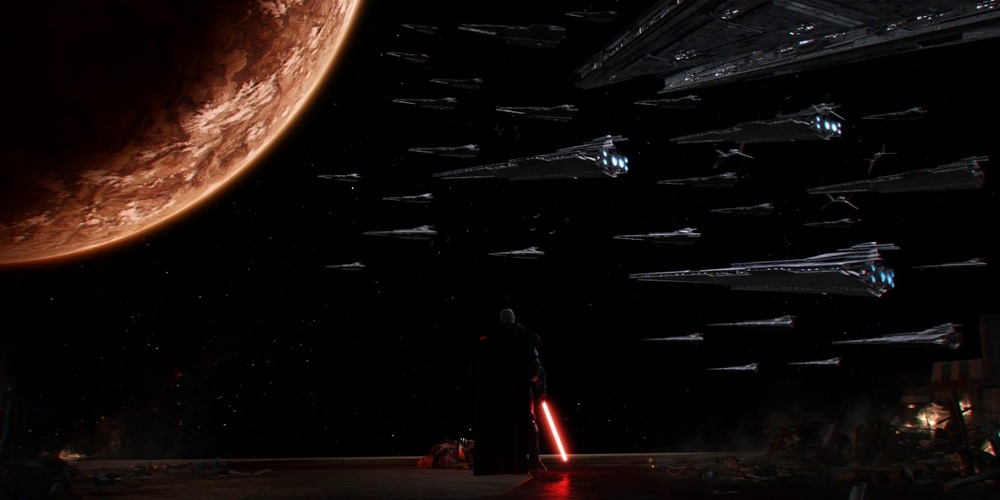
The Great Galactic War was a 28-year conflict which devastated the known galaxy, and culminated in a major victory for the Sith Empire.

The climax of the war was the Sacking of Coruscant, the first Sith conquest of the planet. As a result, the already failing Republic was forced
to sign a peace treaty recognizing Sith rule over much of the known galaxy, after which the Sith withdrew from the devastated planet.

The uneasy cold war lasted only 11 years, and by 4335 (3642 BBY) the galaxy was again at war. The series of conflicts that followed would
last decades, during which Sith empires and Sith orders achieved great victories and suffered decisive defeats. The Sith Empire was
eventually defeated, and for 1500 years the Sith were apparently driven from known space. The secrets of the Sith, and their loyalists,
were resigned to their redoubt worlds in the unknown regions, secret societies, and remnant clans.

The New Sith Empire
The rise of the new Sith Order began in 5977 (2000 BBY) with the Fourth Great Schism of the Jedi Order, where fifty Jedi withdrew from
the order following a Jedi master who had secretly fallen to the dark side. This new Dark Lord unified various Sith cults and clans into
a new Sith Order, dedicated to the pursuit of the 3000-year-old vendetta against the Jedi and the 'Old' Republic.

The schism began the New Sith Wars, beginning with the rise of the 'New' Sith Empire. For nearly 1000 years, the Jedi and the 'Old' Republic
were locked in various conflicts, struggles, and full scale wars with the Sith and their new Empire. The Sith returned to the worlds once
controlled by the old Sith empires, and maintained a base of power in the Trans-Hydian region of the rim. By the year 6500 (1477 BBY)
the 'Old' Republic had become irreparably damaged in terms of economy, resources, and politics. The Sith Empire's victories in this
time period further fueled the collapse of the Republic, which slowly but surely descended into a feudal dark age.

Despite their success, the Sith Empire fell into the usual patterns of infighting and struggles for dominance amongst Sith Lords and their Acolytes,
which led to the fragmentation of the Sith Empire. By the year 6900 (1077 BBY), most of the known galaxy was under the control of local or
regional Sith warlords or Jedi Lords. Near the end of this dark age, the Jedi Order began to reunify, leading to campaigns to remove the Sith
from the worlds and regions they controlled. The Brotherhood of Darkness emerged as the most powerful Sith faction in 6967 (1010 BBY),
attempting to revive the Sith Empire and destroy what little remained of the Republic in the core. The defeat of the Brotherhood ten years
later marked the end of the 'New' Sith Empire, and the near extermination of the Sith Order in the known galaxy.

The Order of the Sith Lords
As the Sith Lords fell to the Jedi, Darth Bane eliminated his most serious Sith rivals, and deceived the Jedi into believing he was dead. He took
his apprentice and went into hiding. The Jedi defeated the remaining Sith, and were confident the order was extinct. Darth Bane sought
to reform the Sith Order to prevent the constant division and internal warfare which plagued Sith history. In 6977 (1000 BBY), he formed
the Order of the Sith Lords, based on the Rule of Two, which dictates that there can only be two Sith Lords, a master and an apprentice.
Henceforth, Sith Acolytes were kept to a minimum and imparted only limited knowledge of the dark side. This structure would reduce
power struggles, and most importantly, help keep the Order hidden from the reformed Galactic Republic and the Jedi Order.

The legacy of Darth Bane would continue unbroken for a thousand years, ensuring the power, knowledge, and schemes of the Sith were handed
down from generation to generation. The Sith devoted themselves to building their power. Dark Lords sought the means to defeat the Jedi
without resorting to open conflict, which had failed throughout history to ensure a lasting victory, and was no longer possible due to
the great numbers of Jedi, and only two Sith Lords. This work came to the point of execution under the leadership of Darth Sidious,
who engineered a plan that would take revenge on the Jedi and Republic simultaneously. In the year 7945 (32 BBY), Sidious used his
influence over the vast galactic commerce guilds to maneuver political control of the Republic under disguise as a politician.
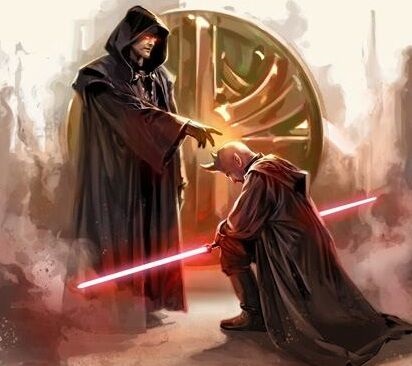
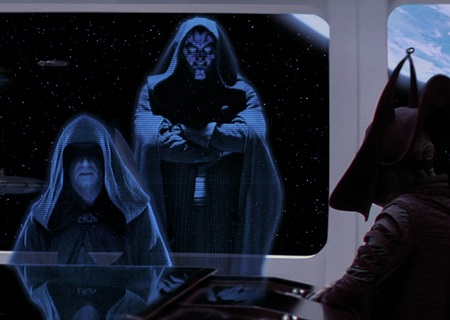
Sidious' apprentice, Darth Tyranus, known publicly as Count Dooku of Serenno, then revived the Sith Empire under the disguise of the Separatist
Alliance, which became the Confederacy of Independent Systems in 7955 (22 BBY), triggering the Clone Wars. This Jedi were unable to unmask
the deceptions of the Sith, due to an imbalance in the Force which clouded their vision, as the dark side steadily grew more powerful.
The Separatist Alliance was not intended to win the war, but served instead to occupy the attention of the Jedi, and to kill them. The war was
also intended to spread galactic unrest, violence, crime, and economic depression, to corrupt and weaken the powerful commerce guilds,
and to devastate loyal Republic worlds that would have resisted the eventual plan for a new empire. The Jedi were unable to resist the trap,
confronted with an opponent to the Republic led by a Sith Lord, utilizing Sith Acolytes, and flying a Sith flag.


While the Jedi were distracted, Sidious used the guise of the war and national security to reshape the Republic into a form that could
transition into a Sith empire. The Jedi finally rebelled against the new order, and Sidious used the Republic's own military to enact
the Sith's revenge on the Jedi, and then the Republic itself. The Establishment of the 'First Galactic Empire' in 7958 (19 BBY) made this
new Sith Empire far larger and more powerful than any that had preceded it. Sidious' new apprentice, Darth Vader, was instrumental
in the destruction of the Jedi Order, and in expanding and maintaining the power of the Empire. He established an order of Sith Acolytes
known as the Imperial Inquisitors, to hunt down remaining Jedi, and force sensitive beings who might eventually grow in their knowledge
of the Force. Although he was Galactic Emperor, Sidious continued to move cautiously, growing the tyranny and oppression of the Empire
slowly but steadily, to reduce organized resistance until work on a new superweapon could be completed. Once the Death Star battlestation
was operational in 7977 (0 BBY), Sidious dissolved the last vestiges of democracy. Ultimately, Sidious' obsession with this ultimate weapon
would lead to his death in 7981 (4 ABY) at the hands of Darth Vader, who also perished.
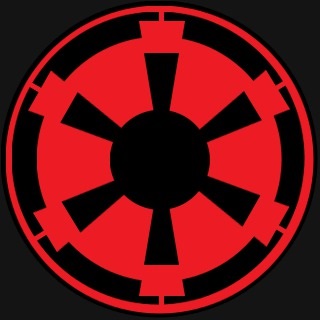
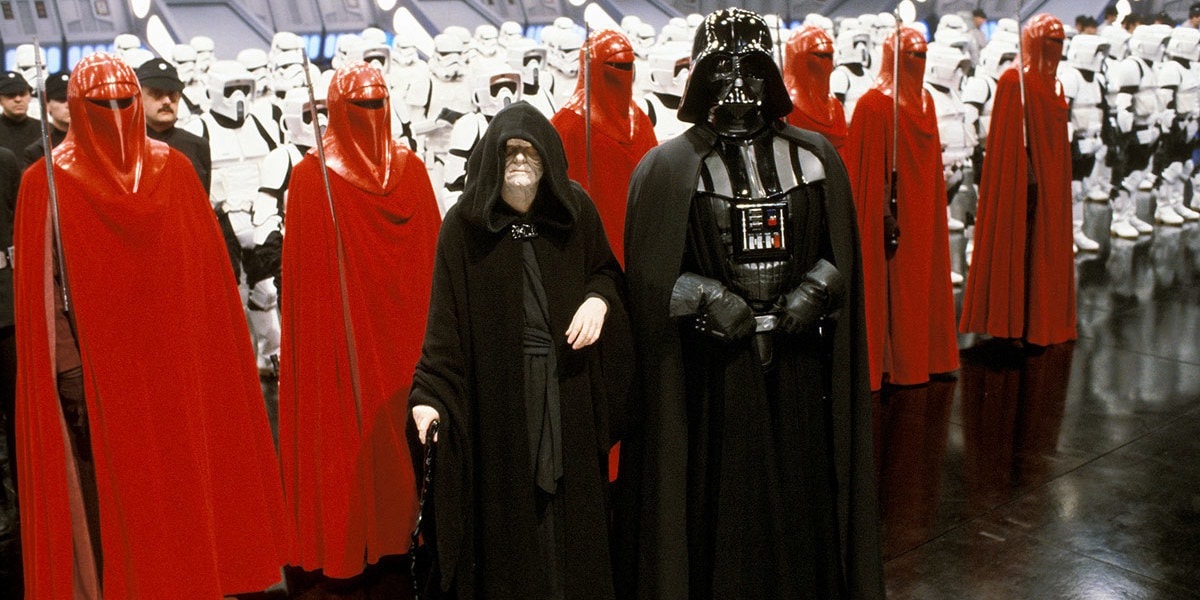
The End of the Sith?
Those elements of the Empire most loyal to Sidious retreated from the known galaxy to the Unknown Regions upon his death, as instructed,
to rendezvous with Sith loyalists and secret Imperial projects undertaken by Sidious. According to non-canon material, these loyalists would
eventually form the First Order, an organization dedicated to rebuilding Sith forces and to returning to conquer known space once again,
as in the days of the True Sith Empire. Maul also led his own Sith project, and was the shadowy leader of a powerful collection of crime
syndicates during the rule of the Empire. It is possible that before his death, he trained his own Sith apprentice who is still operating in
the galaxy. Although Sidious and Vader were both destroyed, it is possible the Sith have not yet been permanently defeated.
